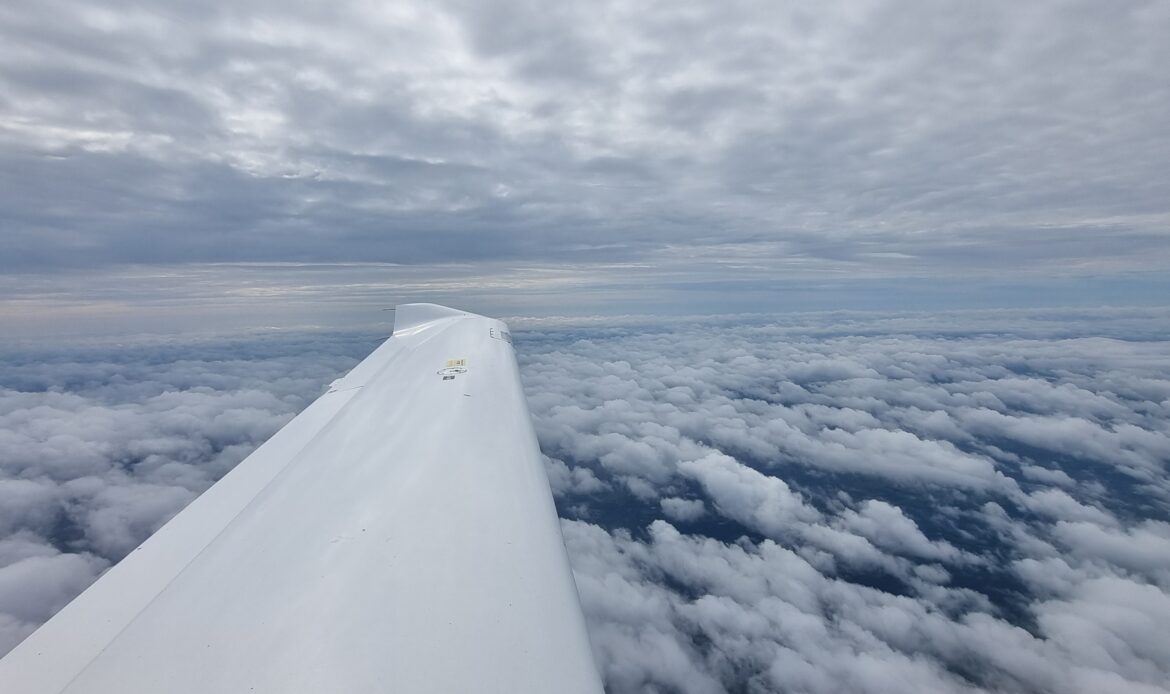Planning the first IFR
The Original plan changed –
Once I finished my Instrument Rating training, I had booked the aircraft over the weekend and the original plan was to fly the aircraft somewhere, although I wasn’t entirely sure where. This then was reduced from over the weekend to one day to allow for someone else to use the aircraft (I am currently in a non-equity group share) and I wasn’t looking to spend that much money in August on flying due to a planned trip to Amsterdam in September (Which was sadly canceled due to COVID).
I was approached by my friend, who I plan on taking to Ibiza in G-ZANY in October that I would fly us to Newquay. This would be a great trial run as there are 3 of us all going to Cornwall in what would be a great trial run for flying to Ibiza. The perfect idea in reality. After a short amount of time, we quickly got closer to a week before the trip and I was still unsure if I would be flying IFR Airways or outside of controlled airspace (Like I’d done in 2017), this provided a lot of logistical nightmares as I’ll explain in the coming write up.
Creating a new checklist –
I am actually a very organised person, however, my time seems to be taken up very sparingly with rather simple things, and then life just gets in the way and it doesn’t get done. One thing I liked when I used to FDJ (Flight Deck Jumpseat) as it was called when I was cabin crew, was the format of the checklist for IFR flying in airliners. This same format has been used in many commercial flight training schools and some General Aviation pilots around the world. It’s a proven format that works and is extremely efficient for an LPC (Less paper cockpit) environment.
Whilst we already have a checklist that works, and that saying if it’s isn’t broke, don’t try to fix it comes to mind, then why do so? I have used the double-sided airliner style checklist for years in flight sim at home, it’s super-efficient and I wanted to cover more aspects than the checklist currently does. I wanted to be very brief, and spend more time actioning rather than reading the checklist. This very much is a work in progress, with an abnormal checklist to develop in the same format. I am also highly considering some SOPs to follow and creating a simple format that I can carry electronically and make my flying that much safer.
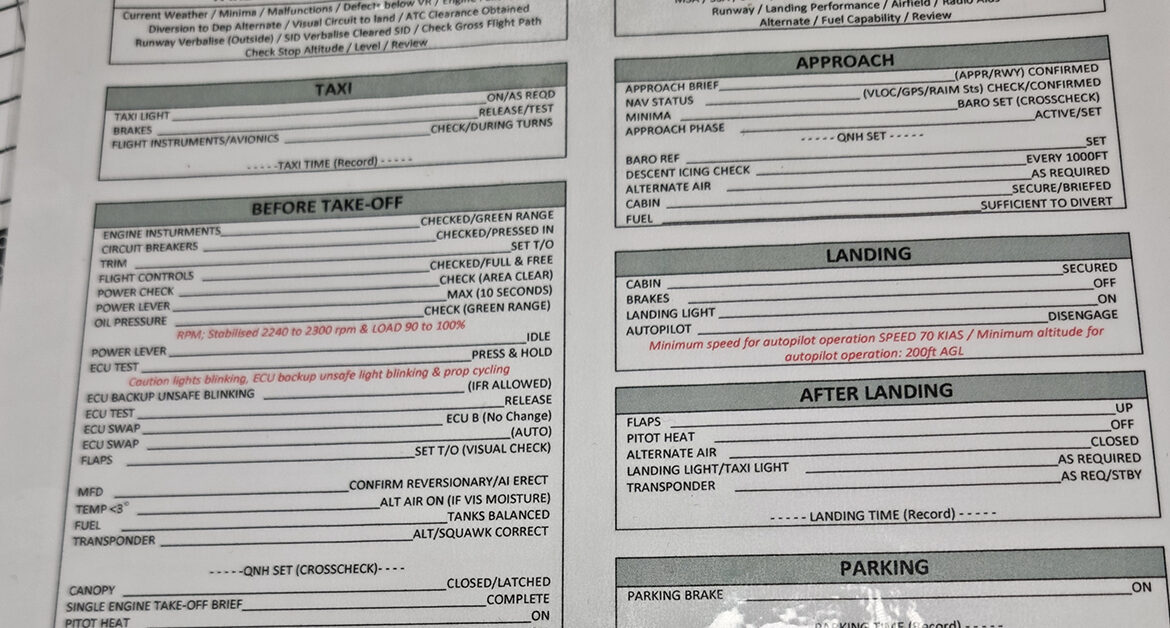
One thing the IR will give me is freedom, and I want to give more back than I get with a better understanding of most if not all situations, thus making me an incredibly safe pilot.
Attempting to Plan –
I said I was organised, but not knowing when my new license with my shiny new rating would arrive would make a perfect idea in reality, just that one step more difficult to achieve. I rang the CAA early in the week and they said my license was printed and should be on the way soon. I rang back later that day and had to question myself, what? I was then told it should be sent out today as it had been printed and would be with me in the next few working days.
I still hadn’t created the new checklist that I wanted to use, I still hadn’t planned or looked at the flight at hand to get to Newquay and back and I hadn’t bought my new headset and a New iPad Pro 11’ that I wanted to get. This required a new mounting extension to ensure that it was in the right place and gave me the utmost situational awareness in flight. The current iPad was 6 years old and the mounting system was bulky and heavy and didn’t really give me what I wanted in the cockpit.
This really was lastminute.com, and I had many things that needed to be done or collected for this flight.
New Toys –
Not knowing when my license would arrive, either Thursday or Friday, I went with the lucky vibe and traveled the short journey to Shoreham by train from London to pick up a Bose ProFlight 2, a Ram mount for the new iPad Pro 11′ 2021 along with some of the required mounting extensions for the new setup I wanted many a year ago.
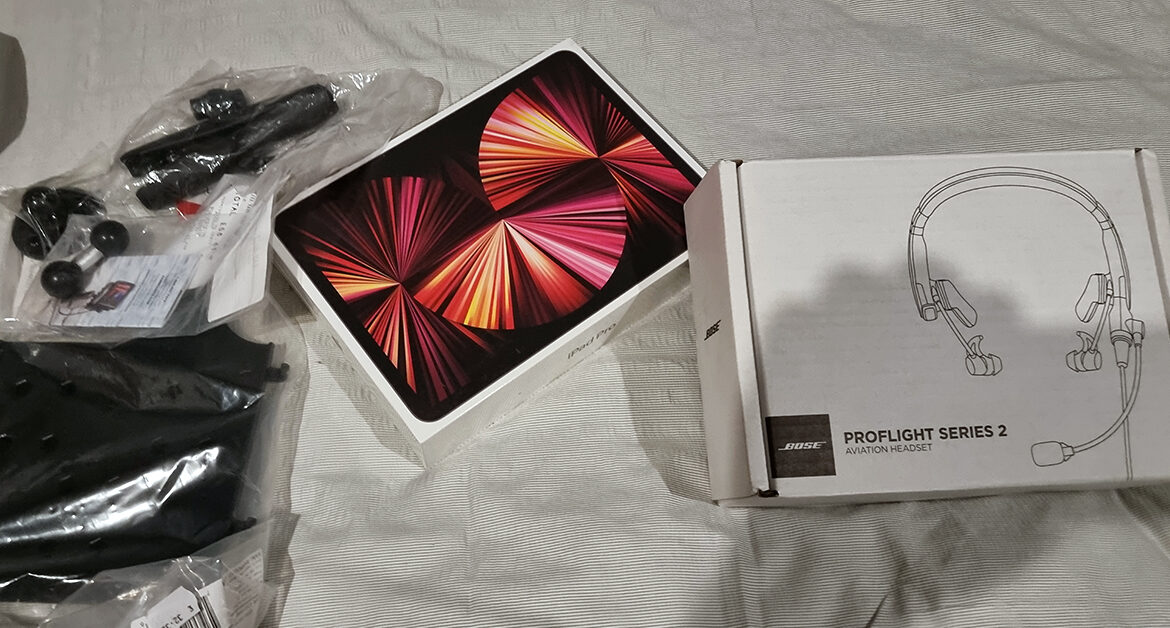
I had work later that day and still needed to travel back to London and purchase a brand new iPad. Why oh why do I leave things till the last minute? I was expecting the license not to arrive for many months, let alone 2 weeks. I traveled to Brighton and changed for service to London, where I went home, dropped the new headset off then made my way to Currys for the new iPad Pro 11′ 2021 256GB model.
I will be doing a review on both items in the not-too-distant future, so stay tuned for those. Luckily the most important aspect that I had done this week was my new checklist which was laminated and ready for use, and it really was a fine effort to get it ready for my first IFR trip.
License arrives –
The license was out for delivery on the morning of the 12th, with the flight planned for the 13th and I still didn’t know if I was going sub-airways or IFR airways. It had to arrive before I completed any planning, as both routes are entirely different. I could fly on my old license outside of controlled airspace, navigating all the complex airspace of the COTSWOLDS & Bristol or I could wait and see if my license would arrive to plan the flight properly and use my brand new shiny Instrument Rating. I was on edge because I had less than 24 hours to plan my first ever IFR trip, safely.
Thankfully the license arrived at 1300hrs just before I left for work, lucky or what? The only annoying thing was I hadn’t set up my iPad properly, except Sky Demon (I wanted to trial Foreflight) and I hadn’t gathered all my up-to-date Jeppesen Charts for the flight. I had been floating around with the routing ideas IFR during the day. There were two options, but I was very unsure based on some of the comments I’d seen online, and ultimately I just wanted to get it right.
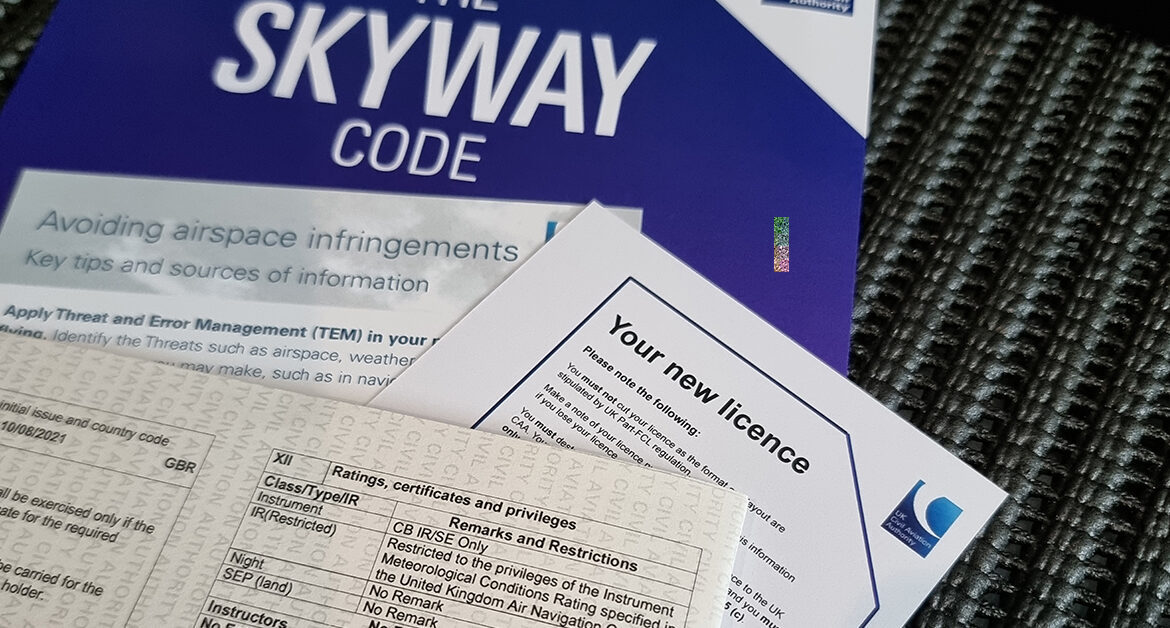
I still had to choose a route, create my flight plan, validate it, send it to CFMU, set it up on both Foreflight and SkyDemon, and Golze, and ensure I arrived at the time I had booked with Fly Newquay (They handle everything for you at a very basic level, with zero costs). This wasn’t an easy feat with minimal time available. I had to go to work…
Discussion on Route –
During my break, I contacted my IRI and discussed the options on the system that Autorouter was giving me. Unfortunately, I couldn’t find the Standards Route Document, it used to be on the old setup of the AIP that was just given a refresh and was worse than the one it replaced. I think this has now been replaced since back to the same system that we all got used to, or a refreshed version. Anyway digressing you can now find the SRD under – NATS UK | Digital Datasets (ead-it.com) which is under Publications on the NATS website.
There were two options, both had an initial routing via the L179 Airway joining at UGBET from LAM with the recommended routing by Eurocontrol routing via Southampton, and across to DAWLY. Unfortunately, this route leaves controlled airspace west of Southampton. You still have to cross the Airways of N864 in the vicinity of DAWLY, unless you descend below FL65. This seems completely and utterly pointless. I’ve read the stories online, where routing IFR to Newquay is a bit frustrating because you are theoretically ejected from the system halfway through your flight.
The other option was routing Q63 to BCN and then routing across the Bristol Channel direct towards Newquay. At least then I leave controlled airspace once and it didn’t really matter. Both routes on the day would be 2.5 hours long due to a strong headwind, but at least the return journey would be relatively quick.
I went with what the system suggested, most simply because I was sure I could negotiate a crossing of N864 and stay at my final cruise level, but from what I read this would probably be an absolute nightmare. My thoughts for the return were exactly the same, how would I negotiate an airways flight that routes uncontrolled, then controlled then back to uncontrolled but this time hurtling towards the controlled airspace at 200 mph due to a stonking tailwind. These are things I haven’t ever done before, and it would be great practice having flown the same route over and over again to Southend or Cambridge.
EGSG N0125F100 LAM L179 CPT Y321 PEPIS Q41 SAM DCT GIBSO DCT DAWLY EGHQ
Routing to Newquay
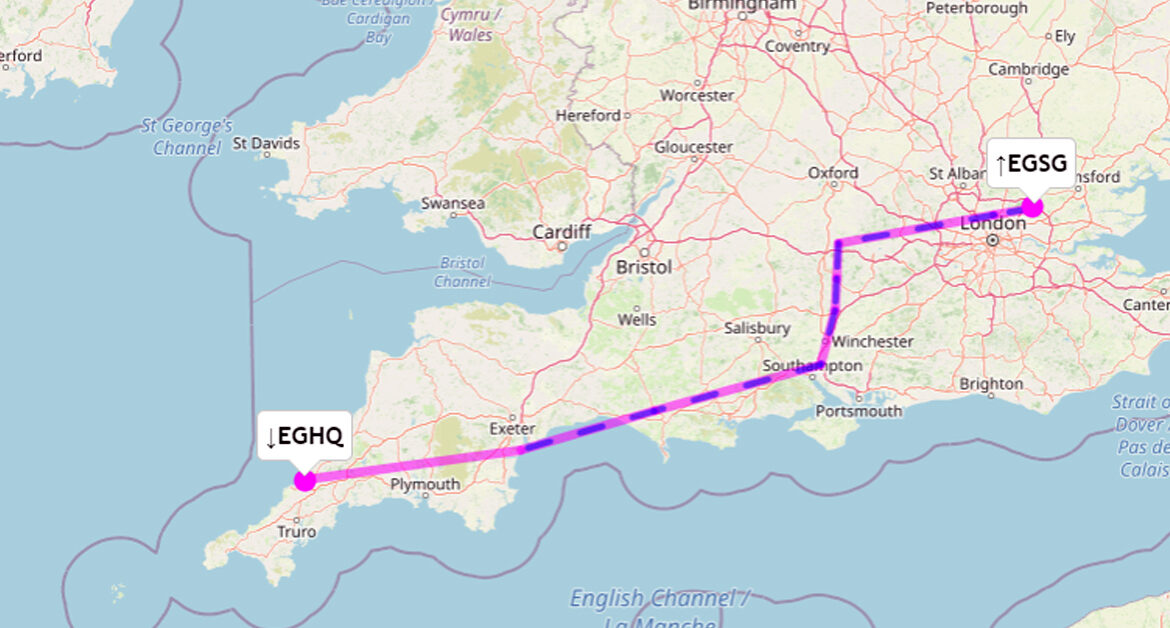
The route back is similar, however takes you up near Oxford before going direct to Stapleford, this would be initially at FL90 before climbing up near the Southampton Airspace. The flight times were incredible, 2hrs 30m there, 1hr 40m back.
EGHQ N0125F090 DAWLY DCT GIBSO/N0124F110 DCT SAM Q41 SILVA DCT WCO EGSG
Routing back to London
What concerned me most was how far away the exit point of that flight was from Stapleford, but it was far simpler in the real world than I thought at first glance.
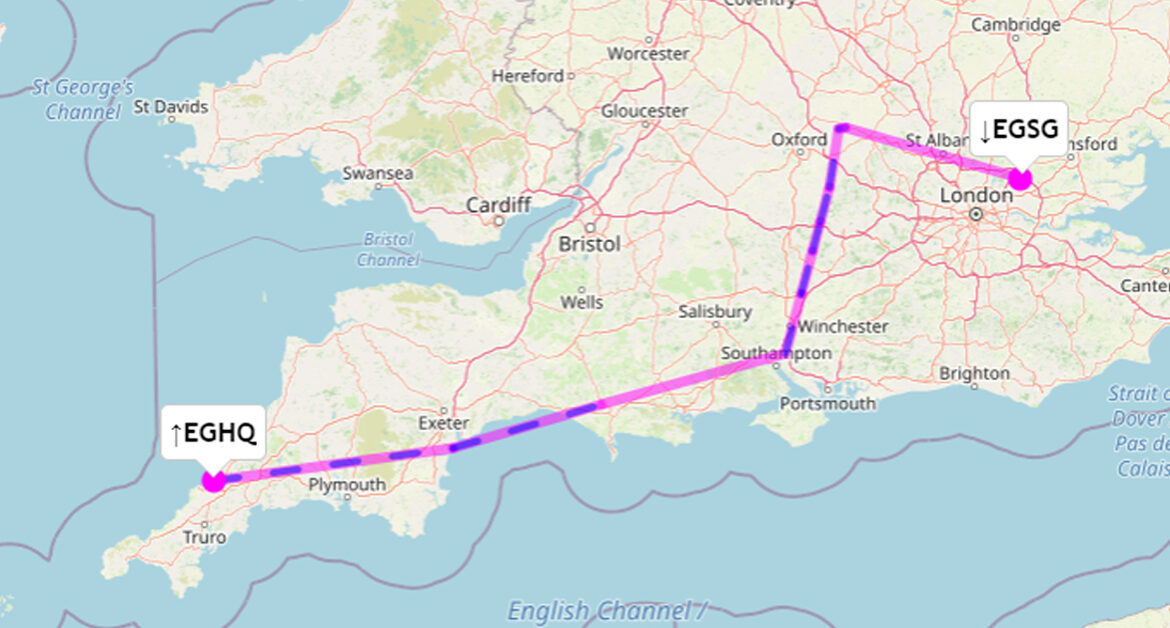
Real-World Ready –
With that last comment, I have to say; both the Flight Crew theoretical examinations and the knowledge base that you study do not provide you with the ability to plan routes. It’s not as simple as A to B like it is on the training sorties. There is a lot more involved and a lot of information that needs to take in to fly a SEP in this environment. There’s a wealth of knowledge and guidance available for the training sorties but flight planning is far more complex and detailed than what you do in the exams. The General Student Pilot Route Manual (GSPRM) is completely pointless because nobody will purchase these very expensive maps and put them out and plan, not with the modern-day technological advances that we have today and the level of detail you can gain from these.
You’d think it was easy, but you really have to know what you are doing with a database like autorouter and how to plan that out on an EFB system like Sky Demon or Foreflight. If anything the world of IFR is far more dynamic than those exams portray and if anything, more guidance should be given. The London TMA is one of the busiest airspaces in Europe, if not the world.
Foreflight & Late Night –
The PLOG I had for training does not cater for extended routings but is more designed for the shorter training routes we do in the Instrument Rating training course. I made some last-minute changes to this in addition to the above workload of setting up my new iPad and ensuring the routes were correct for the flight ahead. There isn’t enough space for all the possible frequencies I would use nor was there any space for all the navaids I use. Depending on how my new iPad fares I may just go with the LPC mantra and have minimal paper-based items. The reliability of the new iPad’s along with the technology we have today is far superior to it was 4-5 years ago.
Some of the feedback I had in my IRT was to have more space to write notes, so I added this in a little bit, but I will add that in when I create my long-term project for my kneeboard which I plan to keep in operation, rather than just rely on the iPad. With the flight plans accepted in the system, first with a validation then with filling – a quick check of CFMU shows my flight plan in the system and all the other active flights around about the time of my arrival. What could possibly go wrong?
I hadn’t written down all that I needed to on the paper-based PLOG, but I usually did this on the tube when I had the more accurate weather forecasts in the morning of the flight. It’s strange but the data does tend to change overnight and sometimes can be quite drastic, as I found out in my training. This is one to watch as planning the night before is good, but you can find yourself completely out on the day of the flight as weather systems in the UK can sometimes be very dynamic. The data online seems fairly accurate but can be slightly out on the day, a forecast is just that, a forecast.
I then thought I’ll add all the aircraft details and its performance figures into Foreflight Web and the flight details as it was far simpler than doing so on the iPad, and it’ll Sync. It later transpires the trial version doesn’t include this, but the great customer service of Foreflight upgraded me to the more premium subscription which includes this at no extra cost on a trial basis. Unfortunately, this meant almost an hour trying to figure out what was going on. I then overslept and wasn’t as prepared as I could have been for my original departure slot.
Weather Non-Eventful –
The weather forecast for the flight wasn’t significant in any way shape or form, in fact for a first jolly; it was perfect; a mixed bag and a sporty arrival likely into Newquay. The general picture for the previous week or so leading up to this date was forecast for good weather and minimal risk of frontal weather. It does seem like a low-pressure system won the day; but nothing of the convective nature.
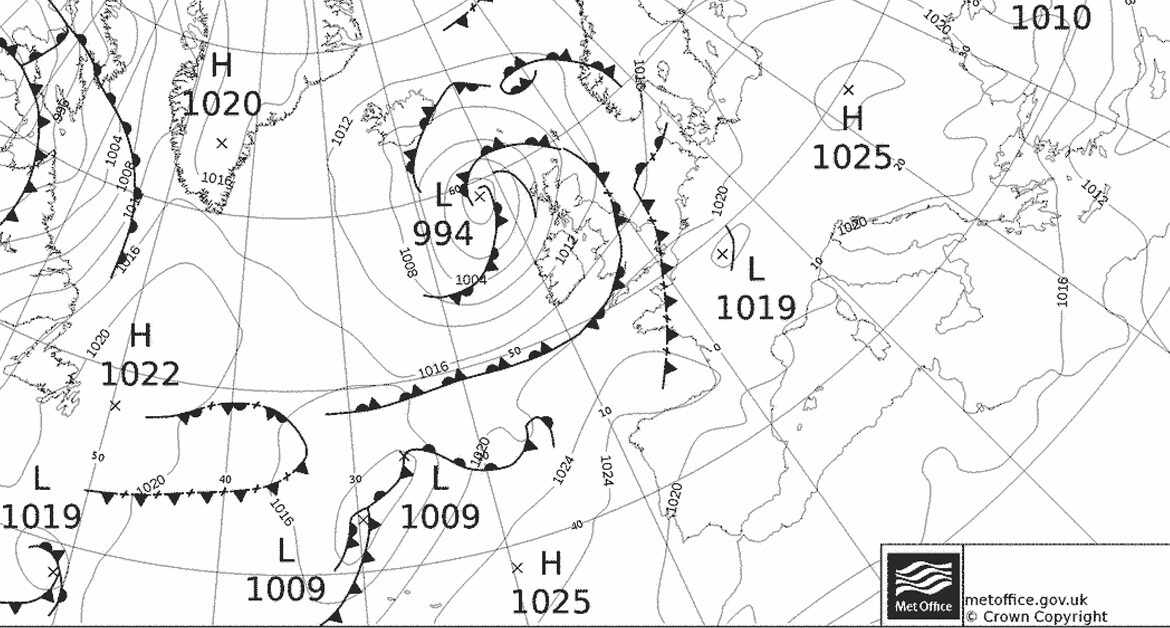
TAF EGSS 130458Z 1306/1412 23010KT 9999 FEW015 PROB30 TEMPO 1312/1318 25015G25KT=
London Stansted – TAF on 13th August 2021
TAF EGHQ 130500Z 1306/1315 23010KT 9999 SCT015 PROB40 TEMPO 1306/1312 22015G25KT PROB30 TEMPO 1306/1309 8000 -SHRA BKN009 PROB30 TEMPO 1309/1312 BKN014=
Newquay – TAF on 13th August 2021
Being the first IFR Airways flight for me without a supervisory person in the right-hand seat came with its threats, not at least this was the first time my two friends had flown in a small aircraft. I had to be careful that I didn’t put them in an uncomfortable situation or a situation that I wasn’t comfortable with. This was the most superior mindset that I had. I learned and developed a great respect for the weather during my Instrument Rating, having flown through some of the worst weather I’ve ever encountered.
I now come well equipped in avoiding anything convective, although on this flight; the weather forecast was very benign.
Morning of Flight –
I had originally planned to depart at 0830z, but by the time I left my house, done all my checks, and prepared the aircraft I knew I wouldn’t have anywhere near enough time. Because of the way the morning went and I wanted to ensure this flight was as safe as possible, I rang Swanwick and applied a DLA to my flight plan of 30 minutes. Sadly I didn’t even get airborne a further 30 minutes after that at 0930z and with a 2 and half hour flight ahead of us, this was fairly disappointing as we should have arrived at lunchtime, not after.
The time you get airborne is based on your OBT (Off Block Time) and the airport Taxi Time. This is usually your slot, but in this case with a London TMA in a Post-COVID world nearing the end of the Summer Season, there was no regulation from either weather or ATC applied. It didn’t matter much, but some airports in Europe will delay you further if you miss your slot. This was an absolutely fantastic opportunity to try what the flights to Ibiza would be like. One thing learned already is time management.
We would need to fly back at 1700z to land by 1900z due to the days closing in, and roughly 2 hours was needed just in case the winds weren’t as forecast.
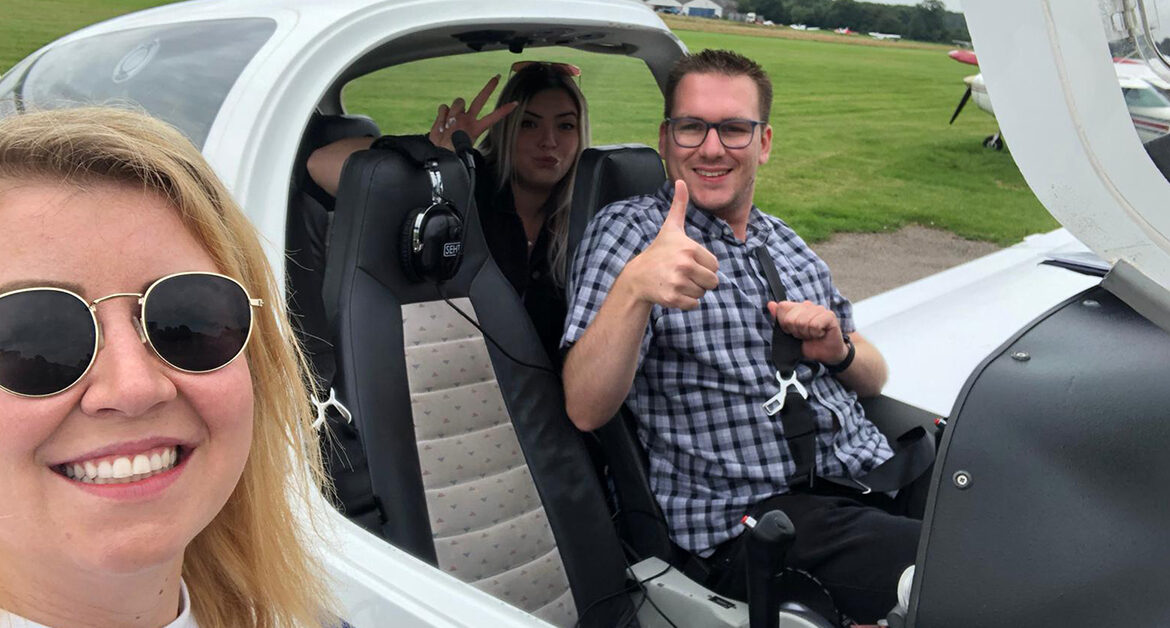
First Flight –
Being my first flight with my new gadgets and my new checklist, everything took an age. We ended up being almost 90 minutes behind where I wanted to be. It was a shame that we departed late, as the day could have been a lot smoother without it. It just made everything feel rather rushed and that took away the edge for this very special day. Departing to the west was not something I have done IFR before so was a little apprehensive, as it’s a little bit more congested in that direction with arrivals into Luton/Stansted, Heathrow arrivals descending, and Heathrow Departures climbing. It’s a busy area!
ATC threw a curveball and wanted me to fly towards Brookman’s Park (BPK) and this completely threw me for a few moments as it wasn’t what I expected, but from my underpinning knowledge, it makes sense. I rolled down the runway at Stapleford with very minimal winds. We were at Max take-off weight and so the usual caveats apply with the stall warner, but we had a great climb rate once we got above 500ft.
I made the unusual right hand turn out (normally I go left and out towards BRAIN) so this was something different. I quickly felt I had the capacity to contact London Control and did so in a stable climb towards Brookman’s Park (BPK). London quickly cleared me into controlled airspace and I climbed and soared above the clouds. This really was what I did all this training for. I had dreamed and dreamed about doing this and thoroughly enjoy the views that aviation can offer.
Literally, nothing can compare to the feeling of soaring above. Nothing.
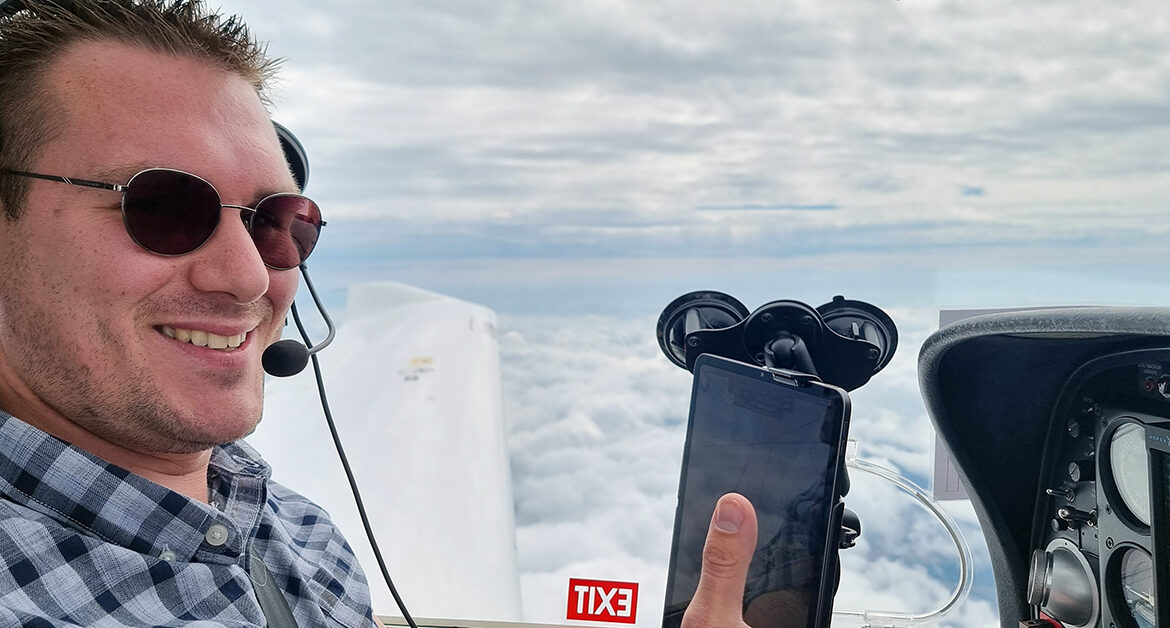
As we climbed, we were turned slightly to the left but tactically separated from some Heathrow arrivals, and we were climbed up to our cruise altitude of 10,000ft pretty quickly. Once the Heathrow arrival was to our left and below our level, we were turned towards a waypoint just west of Heathrow called Compton (CPT). We were transferred through some sectors around Heathrow and down towards Southampton. A nice shortcut at this point would have been lovely, but there’s some Military Airspace between CPT and Southampton that nobody will get a transit through.
I was transferred to Southampton where I put a request in for a transit of the Berry Head CTA and Airways N864. I wasn’t sure what the process would be or who I would be handed off to but was mentioned to speak with Bournemouth who would be my next sector. I asked this same question with that sector, but they told me to request that with Exeter Radar who would pick me up towards Newquay. Usually, in a pressurised aircraft, we would have remained with London Control, but the further you go out and the lower you stay from the London TMA, you become the responsibility of the Approach Controllers. They have a fair amount of airspace compared to their counterparts in the London Area in the vertical sense.
On the flight I ran through my checklist and bear in mind this was the first time I had done this, it worked very well. The checklist was hours and hours of research, knowledge, and training all put into one. I knew what I was doing when and where and I felt comfortable. Much more comfortable. I prepared myself for the approach and checked all the enroute weather.
What was great was my experience in the French Airspace, the ATC system, if you are an IFR Airways flight, is much more coordinated behind the scenes. To my surprise, the request to cross N864 was given by London Control to Exeter Radar which was relayed to me. This made perfect sense but also was different from some of the experiences I’d read on the internet. I even discussed this with a fellow pilot, who said they didn’t even experience this. So maybe I got lucky or I just said the right things?
We continued towards Newquay where I briefed the approach expected after listening to the ATIS. Being high up means you get a lot more time to do things, than being low down and being bumped all over the place in the thermals and wind. This was a breath of fresh air. I could concentrate and feel much more confident. What annoyed me most was I briefed for a TAKE off the stage of flap for landing, but landed with a strong crosswind with a full stage of flap. Silly really but it is what it is, and probably created the bad landing as a result.
It wasn’t long till Newquay Radar has begun our descent, and after 2 hours airborne, we finally encountered our first bit of full IMC. Descending through some puffy cumulus before making a turn towards the airport for the ILS approach Runway 30. It was a tad bumpy at times, but nothing too drastic. My passengers actually enjoyed the cloud surfing and the descent towards the airport. It made for a change of scenery and it’s just a shame the weather wasn’t CAVOK. Not that I wanted it that way 😉
I flew the approach manually, this keeps my skills intact and it’s something I’ll do for all future flights. Departures to cruise manually and arrivals and approaches will always attempt to be manually flown. On some occasions I will fly using the autopilot, as that in itself is a challenge to master, because if you put rubbish in, you will get rubbish out; it’s not as advanced as an A320s with multiple protections.
As we glided through the decision height, I reduced the power and lowered the final stage of flaps. The wind had picked up slightly and I bounced my landing into Newquay. It was frustrating but it was a safe and uneventful flight, that both my passengers enjoyed.
We were met shortly after landing with the refueller who topped our tanks back up for the flight back to London. This saves time before our eventual departure back to London later that day.
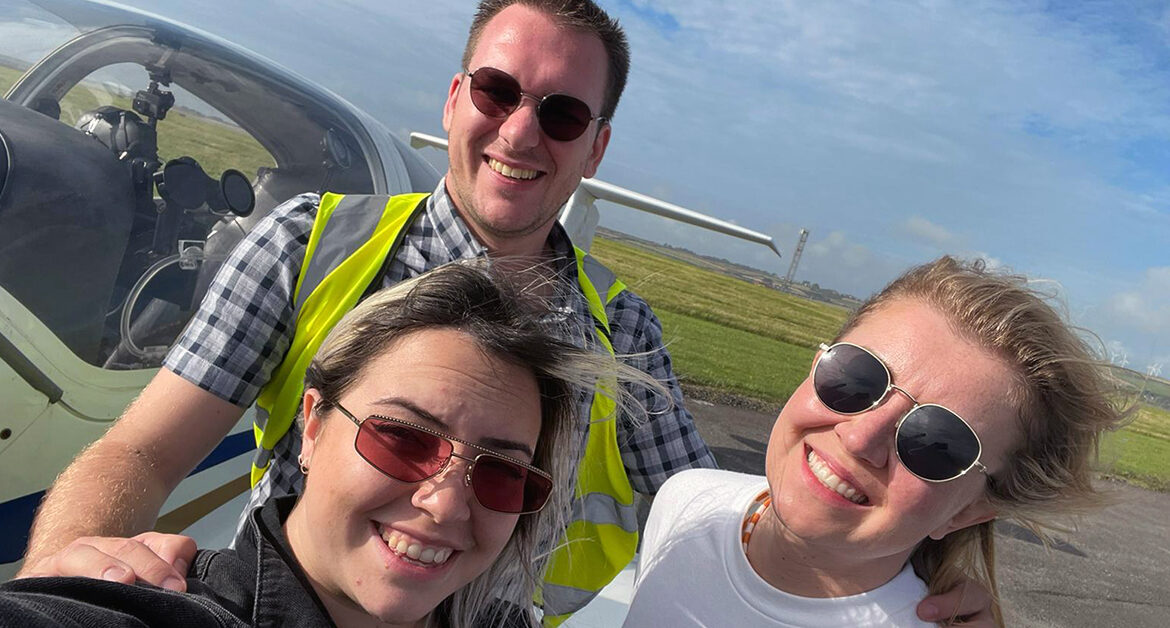
(FPL-GZANY-IG-DA40/L-BDFGLORY/S -EGSG0830 -N0125F100 DCT UGBET L179 CPT Y321 PEPIS Q41 SAM DCT GIBSO DCT DAWLY -EGHQ0209 EGTE EGFF -PBN/A1B2B4C2D2L1O2S1 NAV/RNP1 DOF/210813 REG/GZANY CODE/40125E RVR/800 OPR/ALTAIR AVIATION LTD ORGN/EGKBZXJL PER/A RMK/PILOT GARRETT +44xxxxxxxxxx IFPS REROUTE ACCEPTED)
ATC Flight Plan – Initial
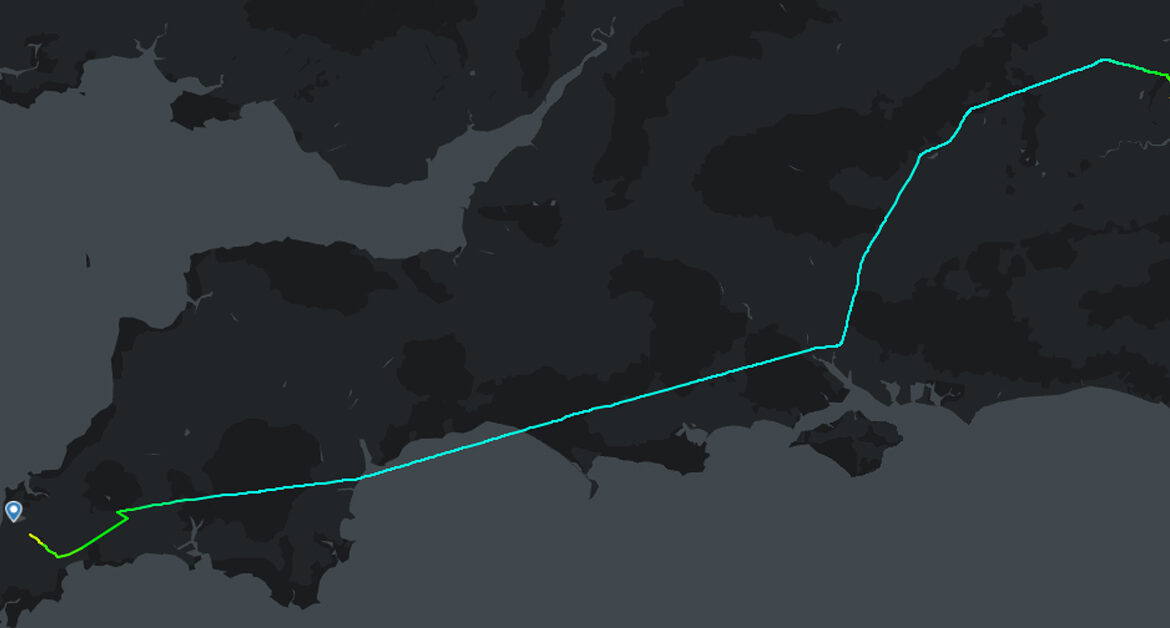
Newquay & Boardmasters –
Roughly 50,000 people descend on Newquay for the Boardmasters festival every August. This year was exceptionally busy, it was the first event in over 3 years and the tourism increase due to international travel being heavily restricted was ever-noticeable.
This wasn’t part of the plan, and nor did I expect much of an impact. In fact, the taxi service was useful, we booked a taxi on landing and it had arrived within a reasonable time-frame. It’s great that everything was coping very well, but I suspect they are used to this level of demand now having sustained it for most of the Summer.
Make sure when you book a taxi that you inform them you are at Flynqy Pilot Training and not the main terminal building, this delayed us slightly but we were on our way within a relative timeframe.
Due to the number of people that had descended on Cornwall that Summer and that week in general, a majority of places were closed due to COVID outbreaks. All restaurants were fully booked and there was no chance to eat unless of course, you wanted take-away. This was just the icing on the cake.
We visited Warrens Bakery which claims to be Britain’s oldest Cornish pasty maker, having been established in St Just in 1860. They really do make great-tasting Cornish Pasties. We walked to a point nearby to The Island House Bridge, an infamous spot that is very picturesque on Towan Beach. Whilst we were sitting a Flock of Seagulls flew over and one decided to empty its bowels on me. Frustrating to say the least, but don’t sit down and eat in Newquay outside.
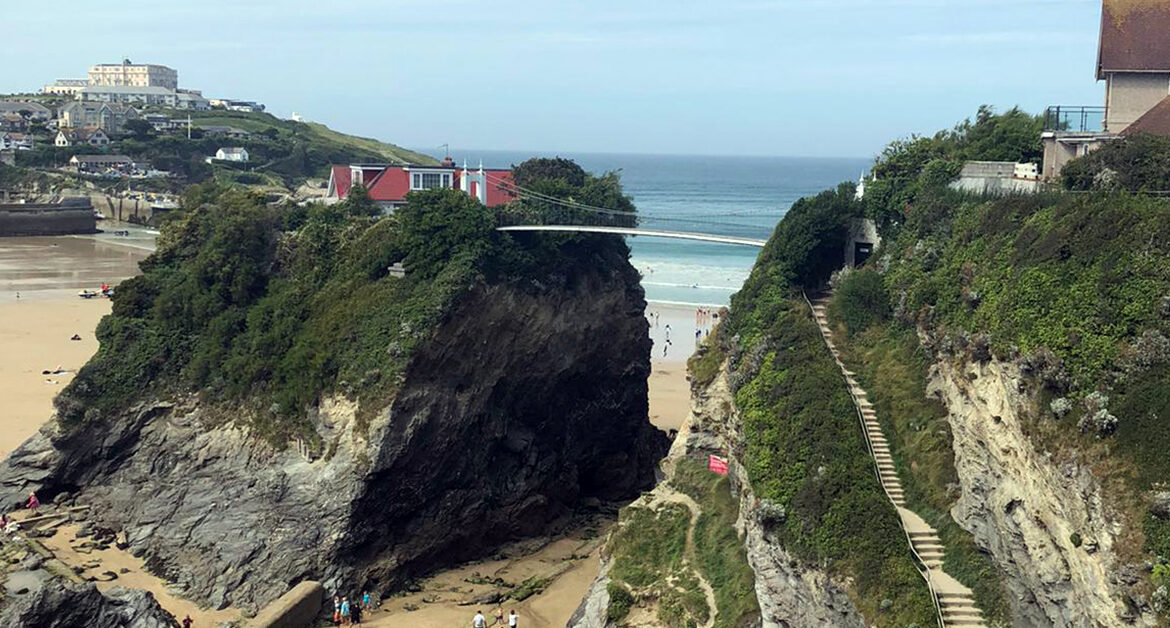
We managed to walk around looking for a place for something more substantial, unfortunately, there was nothing. We did find this bar with a view porched on Beach Road. Unfortunately, we were greeted by a very rude and abrupt waitress who said that once seated we couldn’t move to a better seat. Whilst I get that due to the current situation, it’s a shame that people have used the current situation to be, well, just rude frankly in how they speak to people.
It quickly became apparent, we would need to head back to the airport for at 1650z (1750L) departure back to London. Due to the nature of the activities ongoing in Newquay, we pre-booked our taxi back to the airport for 1630 so that I had at least 1 hour to prepare for our departure back to London.
Once we had taken the taxi back to the airport, I walked out to the aircraft (It’s roughly 5-7 minutes each way) to the base of Fly NQY, so do bear this in mind if you are on a tight schedule and would like to return to use the toilet or use the internet in the club house.
Unfortunately, the mobile reception in Newquay is terrible, and getting a signal at the best of times for data is terrible. The only place I could plan for the return flight was at the airport.
This is the second time I’ve used Fly Newquay being the only place you can stop at if flying in General Aviation. It’s a shame many more flying schools don’t do this at airports across the UK and Europe as it makes such a difference to the whole experience.
The landing fee was £30.00 (This included the Instrument Approach – IAP) and over 2 hours parking was £4.80. JetA1 uplift was £0.85p per litre and we uplifted 50L.
Fee’s & Charges
Return Flight –
I gave the airplane a quick tidy, to save some time when we landed and to move things around. I gave the aircraft a once over before returning to the clubhouse to check the weather for the route along with fill out the PLOG. I hadn’t done this in the morning and prefer to do this before the departure time. Sometimes several hours in advance, but in this case 15 minutes.
We paid the fees and charges above and walked back to the aircraft for the final time before departing back to London. I taxied out 15 minutes late, which was better than almost 60 minutes. It’s a very short taxi for departure from the GA Parking to holding point C2, where once I had completed the checks I was given my IFR clearance.
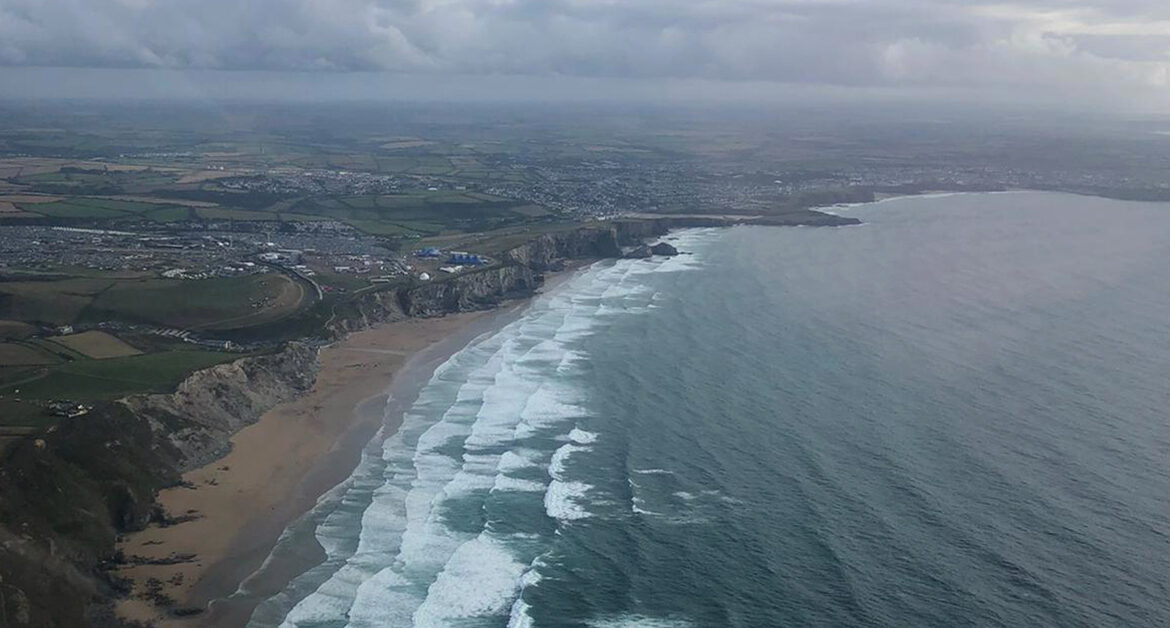
We had a brilliant tailwind for our flight back to London, having only departed we were doing 100knots ground speed despite an indicated airspeed of just 73 knots. As we climbed up to FL90, we were handed off to Exeter Radar who we requested our Airways Crossing from London of N864.
I provided my estimate for DAWLY and as that time got closer, we still didn’t have our airways clearance. So I was ready to turn left and descend, however right before entering Class A airspace we were given our clearance. It was very late but Exeter seemed to be very busy trying to coordinate that crossing. Something to me would later become apparent on this flight, it was either I was traveling far faster than they thought or time just went quicker.
As we were barrelling towards the Bournemouth Airspace, I was told they were closing and Exeter then had to negotiate with Solent/London who would handle me and what they wanted to do with me. I offered to remain OCAS and route between Boscombe Down and the Bournemouth CTA. However, they quickly handed me off to Solent Radar who entered me into the Bournemouth Airspace, climbed me up to FL110, and handed me off to London Control.
What a beautiful sight it was. There’s a stark difference I’ve noticed once you get above FL100, after all, this is almost 2 miles up. We were given vectors across what appeared to be a very busy London TMA sector before we were given our plan which was to fly North of Heathrow and Leave controlled airspace by Brookmans Park.
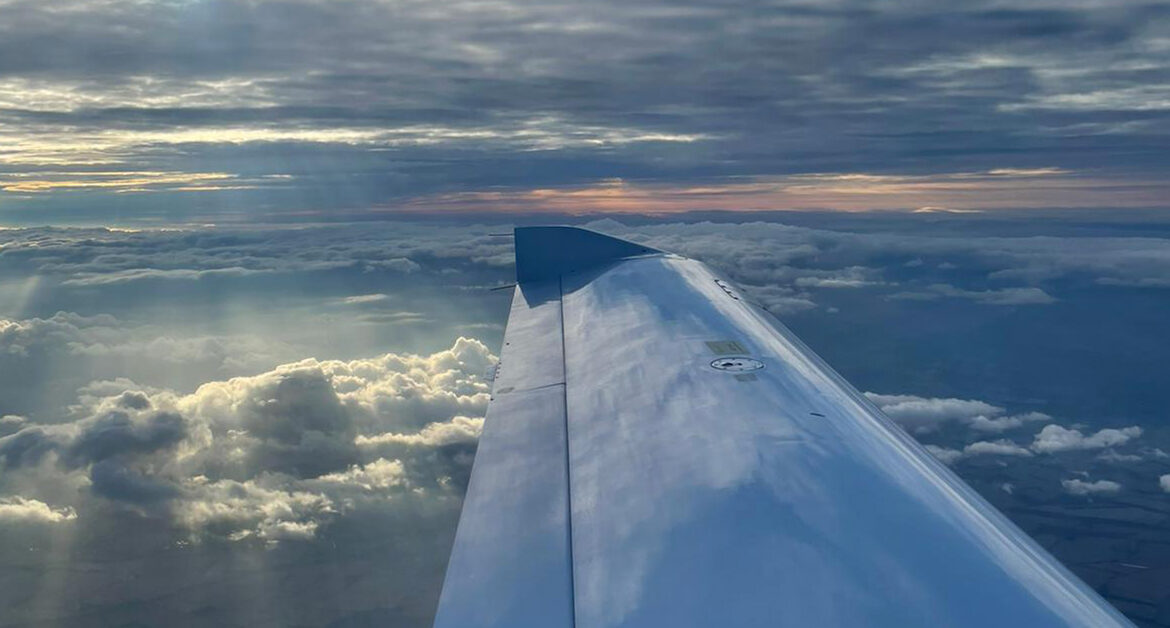
We were given multiple turns and multiple descent clearances and slotted in with the Heathrow arrivals before being informed to descent a bit quicker to be outside of controlled airspace by Brookmans Park. I did elect a decent rate of 500fpm but was instructed to increase this rate of descent as I would conflict with Stansted Arrivals. I went to a comfortable maximum of 1000 feet per minute and slowly descended through a very thin layer of clouds before leaving the London TMA just north of Cheshunt.
I made a couple of blind traffic calls on the radio for a very sporty arrival into Stapleford and a short 1hr 40-minute flight from Newquay.
At least the landing was better this time…
(FPL-GZANY-IG -DA40/L-BDFGLORY/S -EGHQ1650 -N0125F090 DAWLY DCT GIBSO DCT SAM/N0125F110 Q41 SILVA DCT WCO -EGSG0127 EGMC EGTK-PBN/A1B2B4C2D2L1O2S1 NAV/RNP1 DOF/210813 REG/GZANY CODE/40125E RVR/800 OPR/ALTAIR AVIATION LTD ORGN/EGKBZXJL PER/A RMK/PILOT GARRETT +44xxxxxxxxxx IFPS REROUTE ACCEPTED)
ATC Flight Plan – Initial
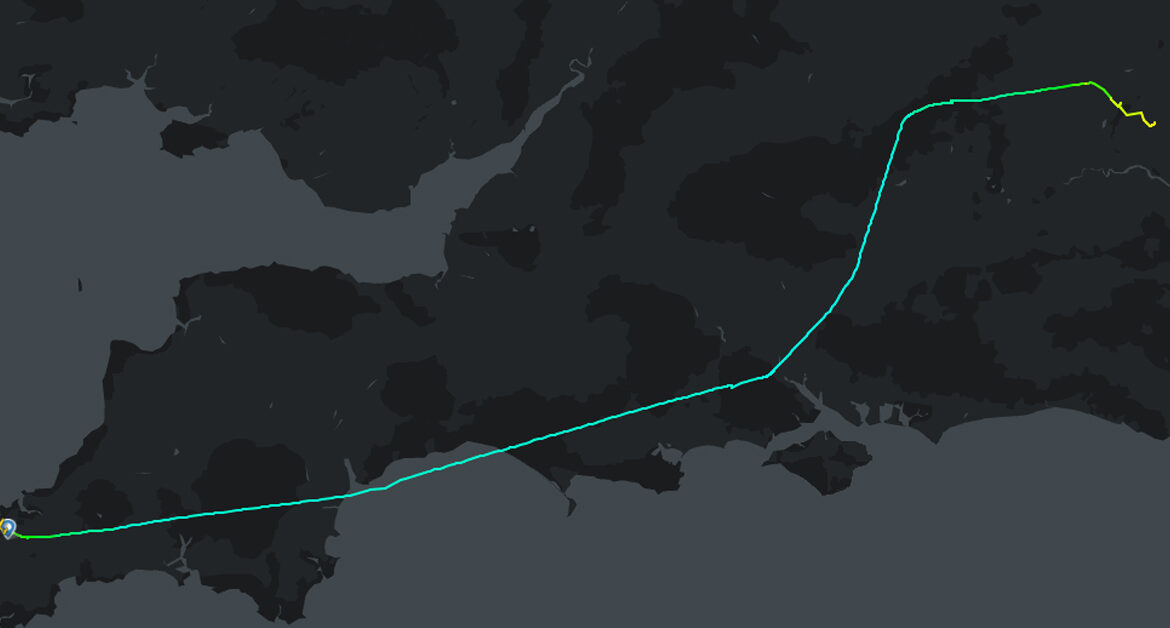
Recap –
This was a brilliant little run, it helped me understand some of the setup of the London TMA and how they integrate a light aircraft wishing to fly from A to B in IFR conditions. There’s a lot more to it than meets the eye in your training and the theory prepares you for nothing of what the real world entails.
I suspect in the future I need more time to do my planning, and I need to be a bit better with my timing. I took a lot away from this flight and how the aircraft performs in this environment for any future trips or flights I plan.
FlyNQY was brilliant as usual, and the fees are within a reasonable amount expected for a large international airport.
I’m more capable than I give myself credit for. I am confident but not overconfident and this was a great little trip and forever a small amount of that steep learning curve has been traveled.
First VLOG (Outbound Flight) –
Second VLOG (Return Flight) –
Version 1.1 – Last updated 03/10/2021
Aircraft –
The aircraft is a DA40 TDI, which uses a Thielert “Centurion” 135 hp (101 kW) diesel engine and burns diesel or jet fuel. It has a constant-speed propeller and FADEC (single lever) engine control. G-ZANY is based at Stapleford Aerodrome, Essex, UK and was delivered as new in 2003.
Read more about the aircraft on the dedicated page
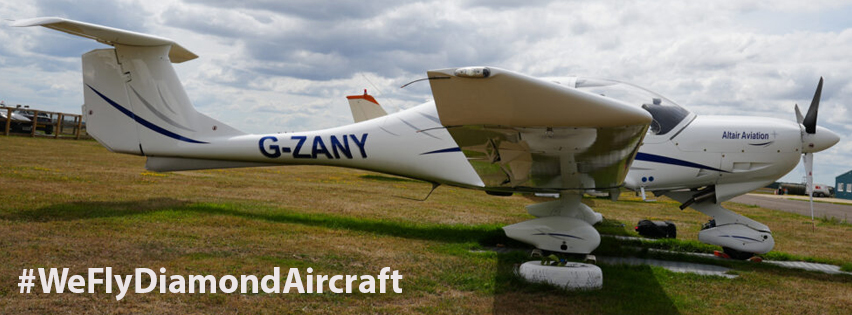
Supporting the YouTube Channel –
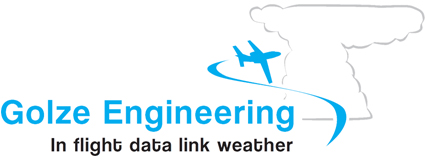
Support the YouTube Channel –
Welcome to The FLYING VLOG…
I am a current PPL(A), SEP (LAND), IR(A) SE/SP PBN, IR(R) & Night holder. Flying the world, exploring its hidden treasures. Taking pictures and vlogging the journey; I hope I can provide you with an oversight of my progression and as I develop my skillset and airmanship in exclusive videos on my YouTube channel.
Now flying IFR in the Airways of Europe & beyond. Bringing you an exclusive niche to YouTube, flying in the same skies with commercial airliners.

